Itheri Yahiaoui
URCA
Interpretable Long Term Waypoint-Based Trajectory Prediction Model
Dec 11, 2023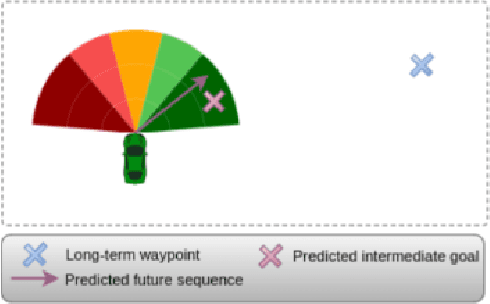
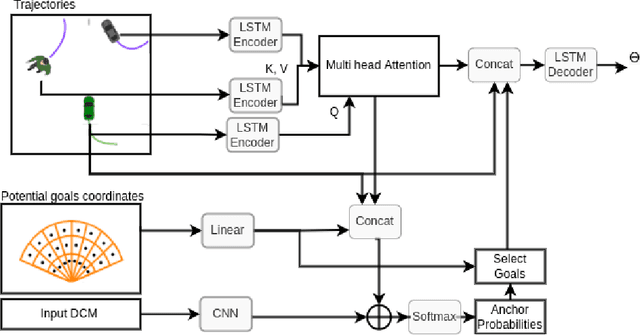

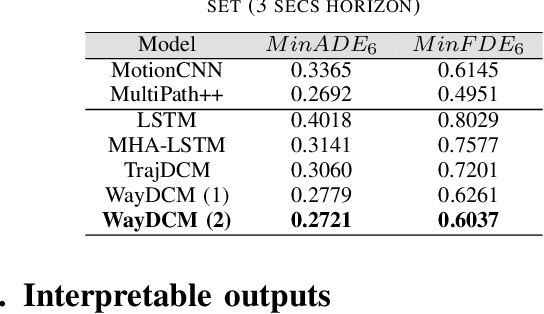
Abstract:Predicting the future trajectories of dynamic agents in complex environments is crucial for a variety of applications, including autonomous driving, robotics, and human-computer interaction. It is a challenging task as the behavior of the agent is unknown and intrinsically multimodal. Our key insight is that the agents behaviors are influenced not only by their past trajectories and their interaction with their immediate environment but also largely with their long term waypoint (LTW). In this paper, we study the impact of adding a long-term goal on the performance of a trajectory prediction framework. We present an interpretable long term waypoint-driven prediction framework (WayDCM). WayDCM first predict an agent's intermediate goal (IG) by encoding his interactions with the environment as well as his LTW using a combination of a Discrete choice Model (DCM) and a Neural Network model (NN). Then, our model predicts the corresponding trajectories. This is in contrast to previous work which does not consider the ultimate intent of the agent to predict his trajectory. We evaluate and show the effectiveness of our approach on the Waymo Open dataset.
* arXiv admin note: text overlap with arXiv:2308.04312
Interpretable Goal-Based model for Vehicle Trajectory Prediction in Interactive Scenarios
Aug 08, 2023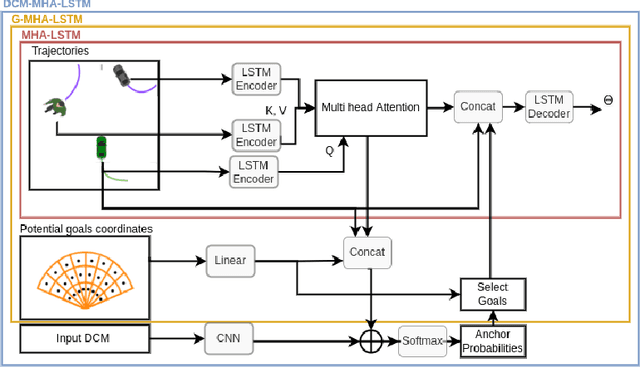

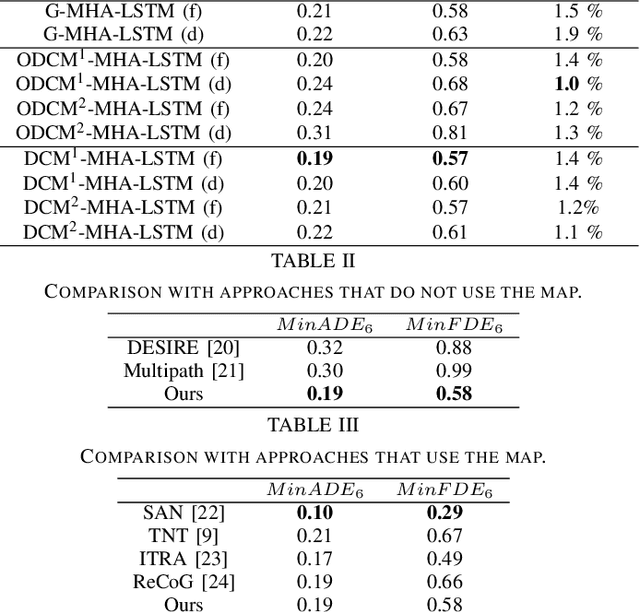
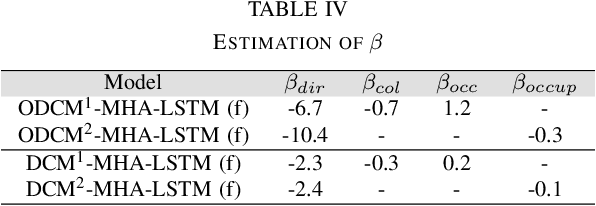
Abstract:The abilities to understand the social interaction behaviors between a vehicle and its surroundings while predicting its trajectory in an urban environment are critical for road safety in autonomous driving. Social interactions are hard to explain because of their uncertainty. In recent years, neural network-based methods have been widely used for trajectory prediction and have been shown to outperform hand-crafted methods. However, these methods suffer from their lack of interpretability. In order to overcome this limitation, we combine the interpretability of a discrete choice model with the high accuracy of a neural network-based model for the task of vehicle trajectory prediction in an interactive environment. We implement and evaluate our model using the INTERACTION dataset and demonstrate the effectiveness of our proposed architecture to explain its predictions without compromising the accuracy.
 Add to Chrome
Add to Chrome Add to Firefox
Add to Firefox Add to Edge
Add to Edge